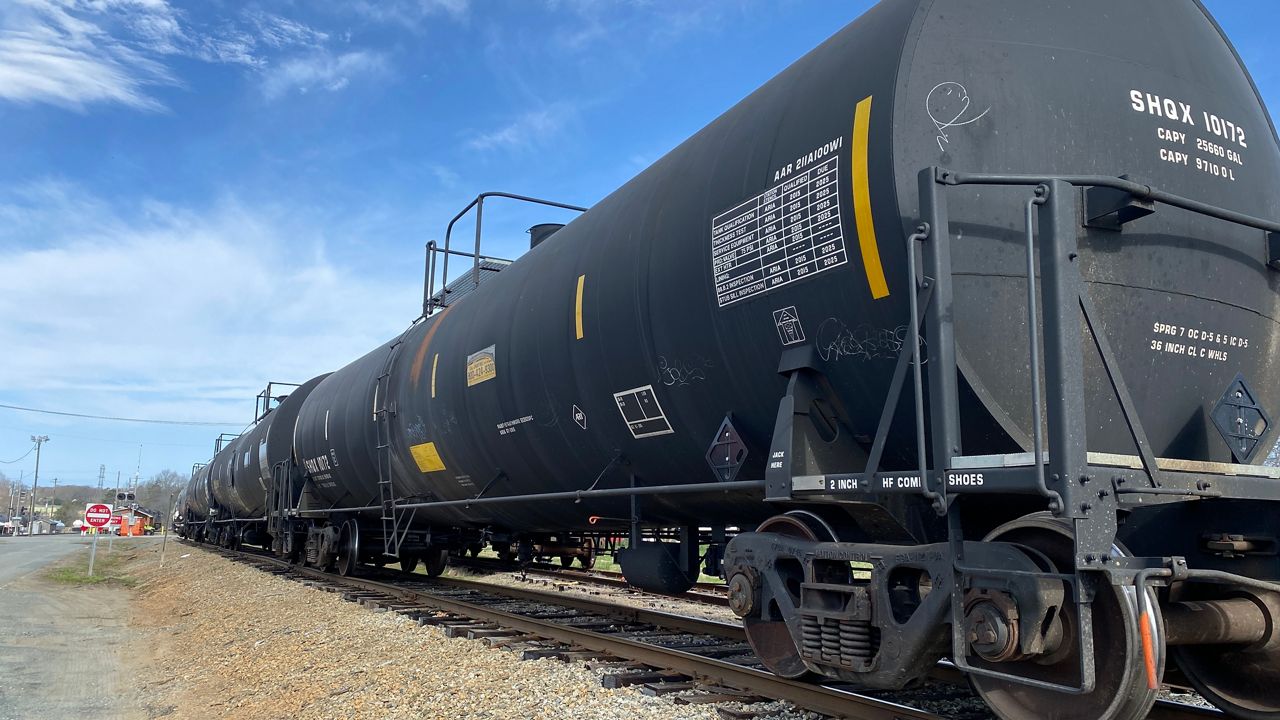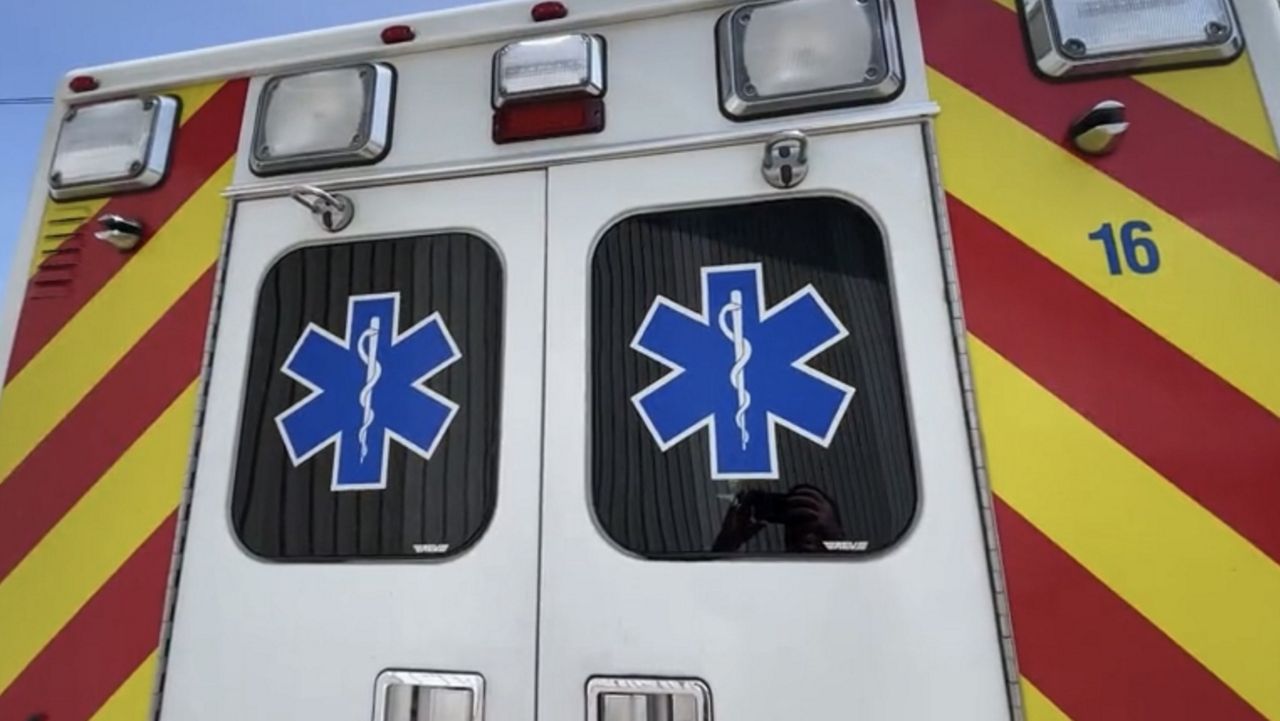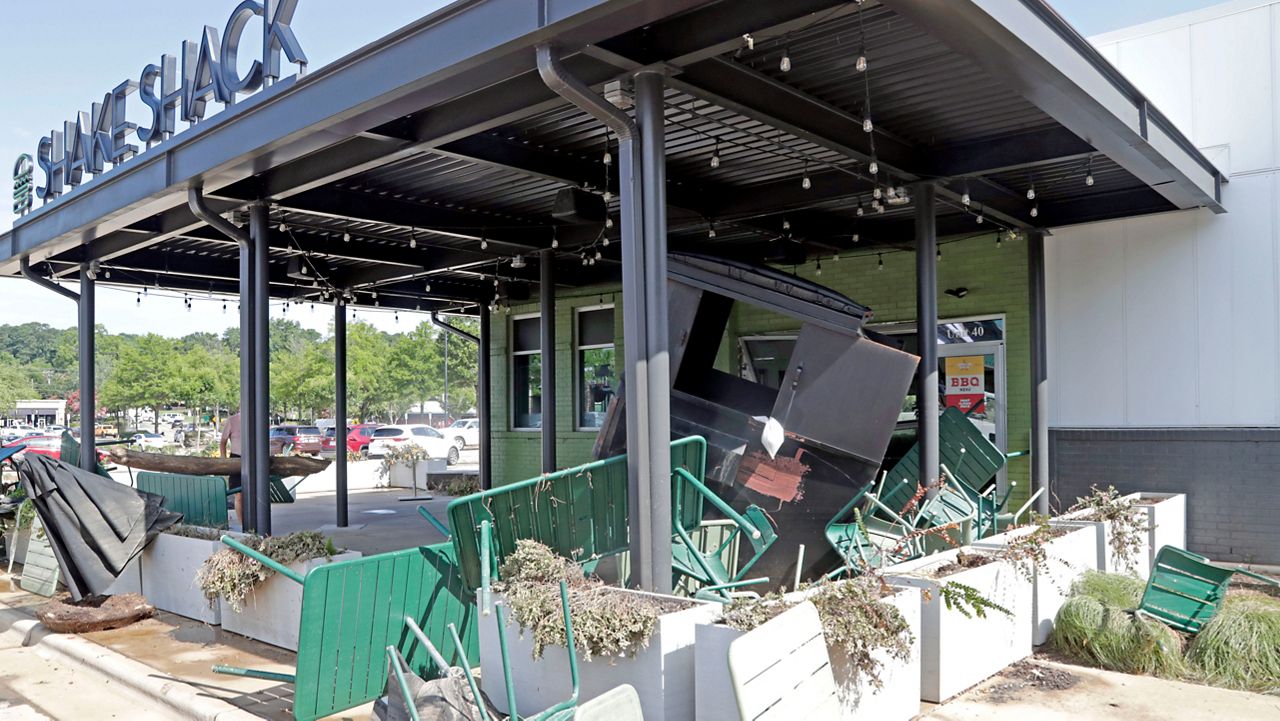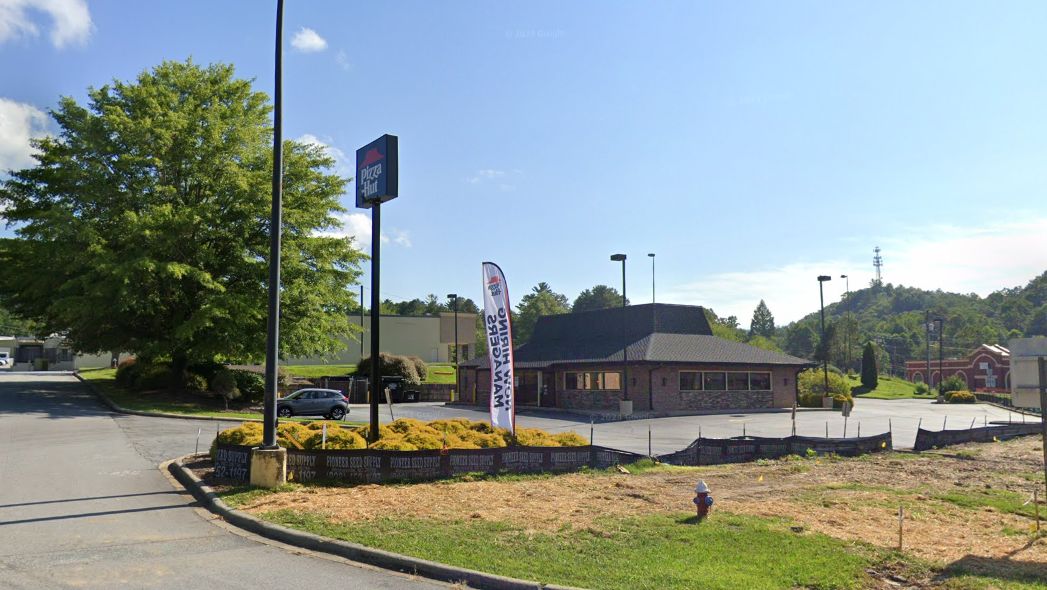Across the United States, there are more than 1,500 train crashes and derailments each year, federal data shows. But few are as dramatic and damaging as the Norfolk Southern derailment last month in East Palestine, Ohio.
The number of crashes and derailments has come down over the past 20 years. In 2004, there were 3,385 rail accidents, according to the Federal Railroad Administration. In 2021, that number was 1,627.
North Carolina has averaged about 32 derailments and crashes annually over the past five years, federal rail safety data shows. But most of the incidents in North Carolina were relatively minor compared to the Ohio derailment, according to a Spectrum News 1 analysis of the federal data.
The train derailment in Ohio spilled toxic vinyl chloride. A massive fire after the crash forced thousands of people to evacuate, according to the National Transportation Safety Board. The preliminary investigation found a wheel bearing overheated, and the train could not stop before it failed completely, the NTSB said.
Rail unions say cost-cutting by railroad companies has led to fewer workers doing more hours and has hurt safety on America’s rail network. But railroad companies point to the federal safety data showing the number of incidents has dropped in the last two decades.
Nationally, the rate of train cars derailing is down 44% since 2000, but it did increase by about 5% last year.
The data for North Carolina has details about the incidents, including what caused train cars to derail and what happened when trains struck cars in crossings. The data also includes the number of cars carrying hazardous material and if any of those were damaged or leaked.
Since 2018, there have been three incidents in North Carolina involving damaged hazmat cars leaking hazardous substances.
On Dec. 30, 2018, a train hit “rough track” in Pisgah National Forest, north of Marion, North Carolina. Eleven cars derailed, including two carrying ammonium nitrate, a chemical used in fertilizer, according to federal data. The cars leaked a total of more than 390,200 pounds of ammonium nitrate.
The accident investigation found that it had been raining for several days in the mountainous area northeast of Asheville and the water runoff had damaged the bed for the train tracks.
Two days later on the other side of the state, a train carrying molten sulfur derailed near Aurora, North Carolina, by the mouth of the Pamlico River.
On Jan. 1, 2019, according to the accident report, a CSX train was traveling at 23 mph when it hit a damaged part of the track. Eleven cars derailed, including two that leaked at least 1,000 gallons of molten sulfur. Local news reports at the time said the train leaked up to 8,000 of molten sulfur.
The third hazmat release in the data was July 25, 2019, when several train cars derailed in Greensboro and one leaked about five gallons of denatured alcohol.
The biggest derailment in North Carolina since the beginning of 2018 happened in Wadesboro, southeast of Charlotte, according to the Federal Railroad Administration. On Aug. 17, 2021, a train hit an 18-wheeler on the tracks, derailing 80 cars, the data shows. Nobody was in the truck when it was hit by the train.
Mapping the data does show some areas where the number of derailments and crashes are concentrated, such as in Greensboro or between Lexington and Salisbury. Those are Norfolk Southern rail yards, where rail workers are coupling and uncoupling trains.
The investigation into the East Palestine crash included what are called “hot box” sensors. The sensors are set along the track to check for problems like the overheating blamed in the Ohio derailment. One derailment in North Carolina included an alert from a hot box sensor.
A conductor driving a train near Wilson, North Carolina, on July 31, 2019, got an alert from a hot box sensor, according to the federal data.
“Upon receiving the message the train went into emergency,” the investigation found. “Conductor walked the train and found the sixth car derailed.”
That train had five cars carrying hazardous materials, though none were damaged.
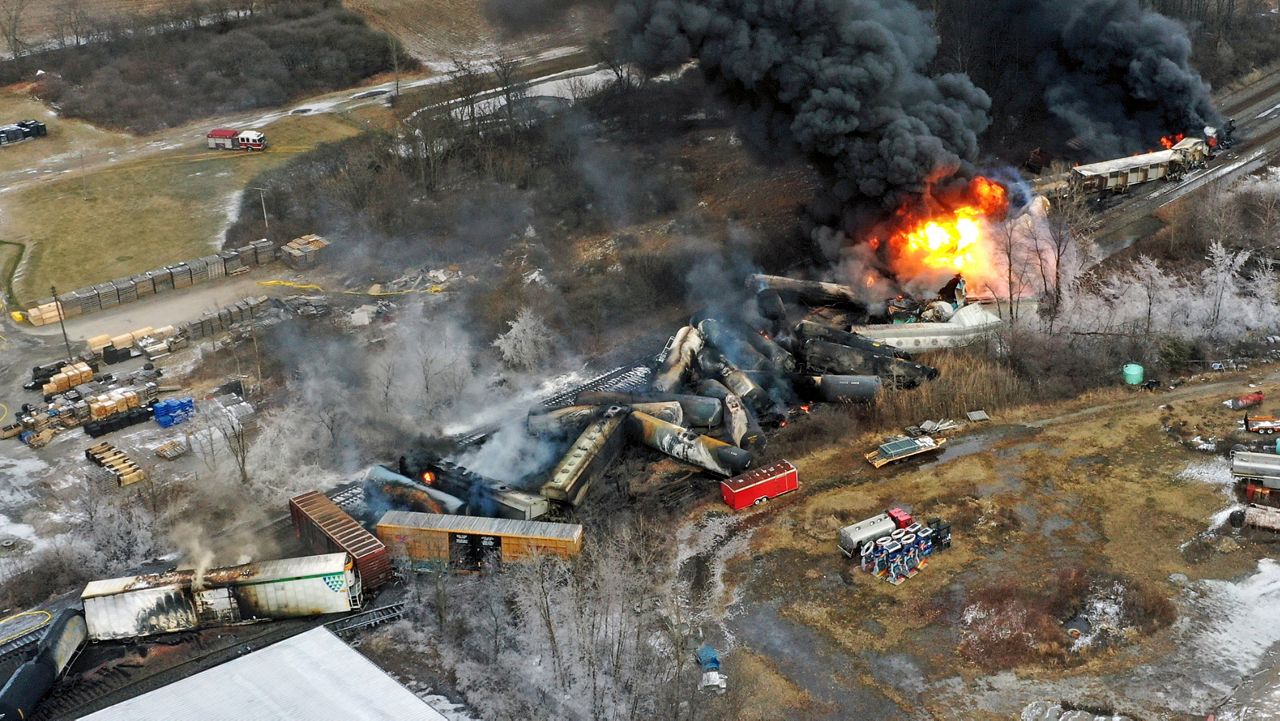
Trains carrying hazmats crisscross North Carolina every day, passing through the state’s biggest population centers in the Triangle and Charlotte.
The data shows that trains are getting safer, but as the people of East Palestine, Ohio, have seen, major accidents can and do happen. And they can have serious consequences for people’s health and the environment.
After the crash in Ohio, U.S. Transportation Secretary Pete Buttigieg called for improving rail safety. Those reforms include safer cars to carry chemicals and protecting workers who report problems. He also gave Congress specific recommendations for laws that would improve rail safety.
"Profit and expediency must never outweigh the safety of the American people," Buttigieg said.
"We at USDOT are doing everything in our power to improve rail safety, and we insist that the rail industry do the same – while inviting Congress to work with us to raise the bar," he said.





